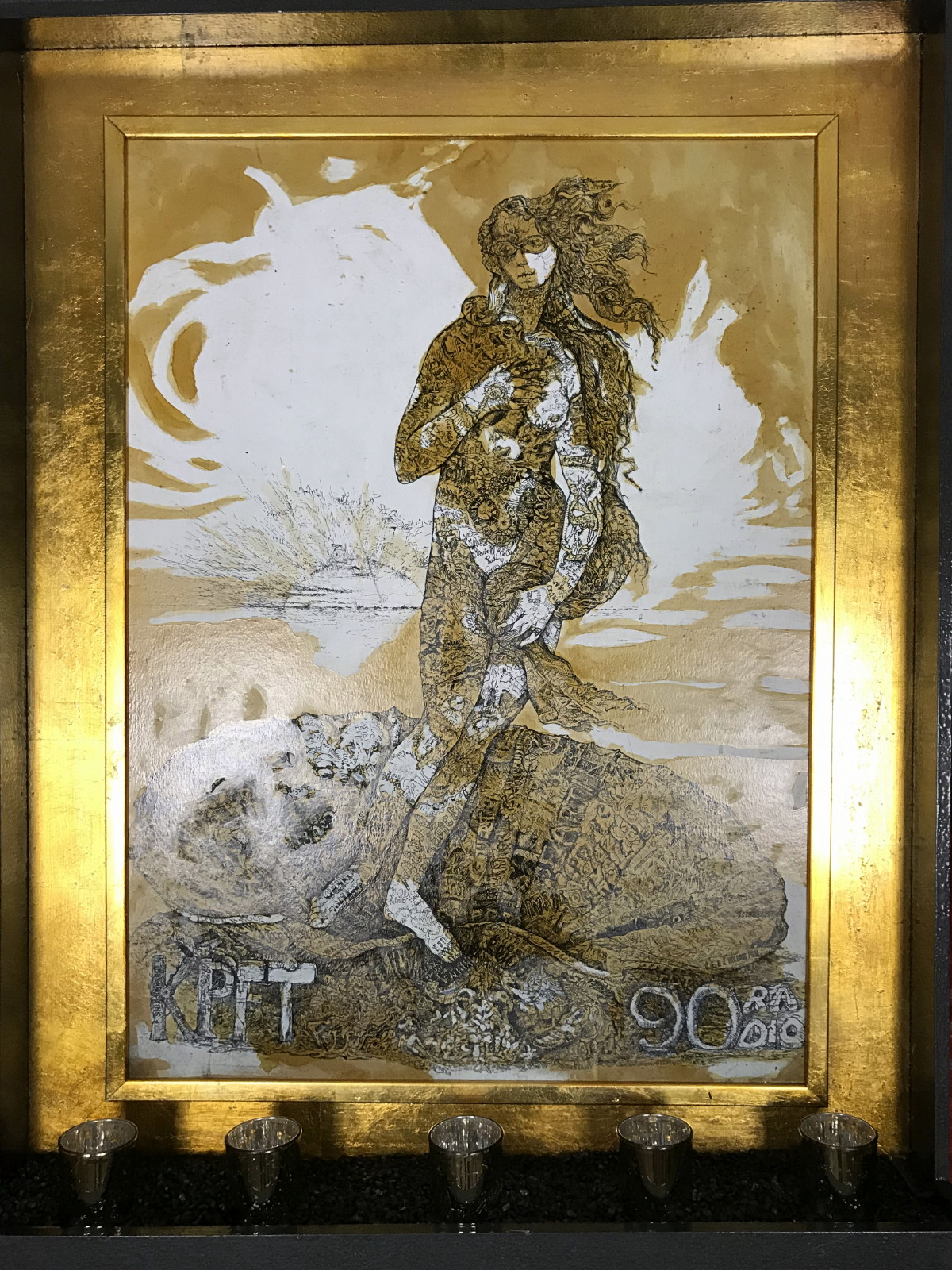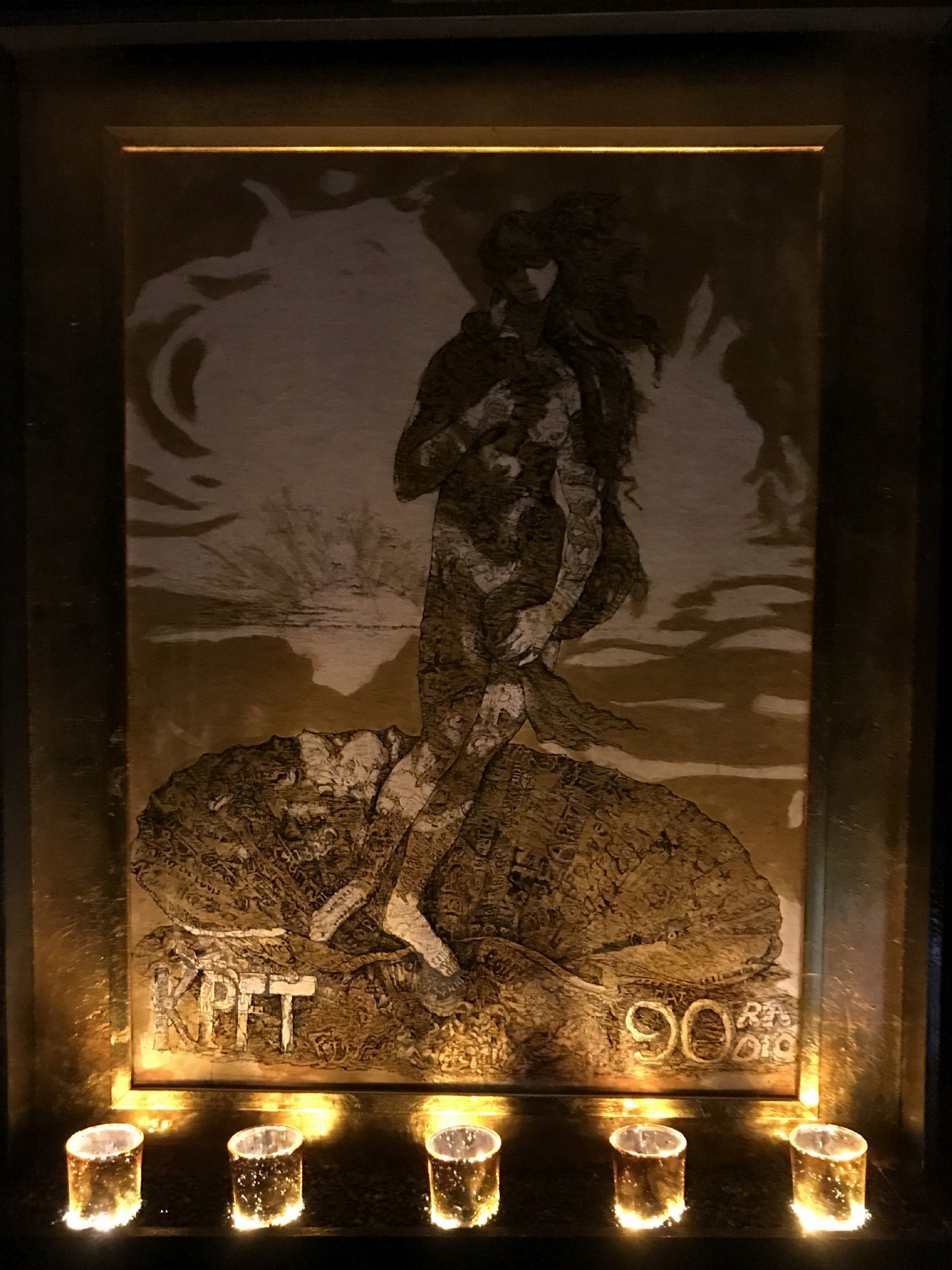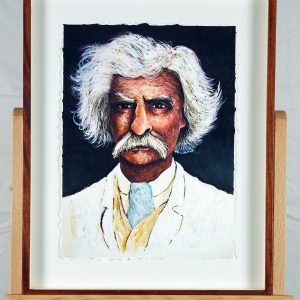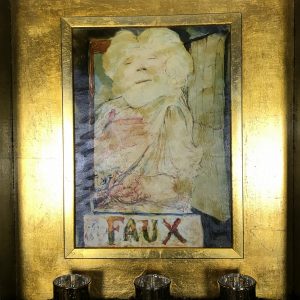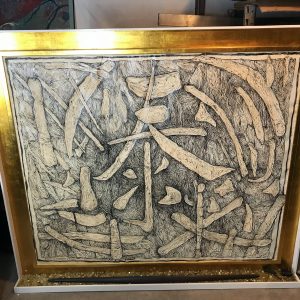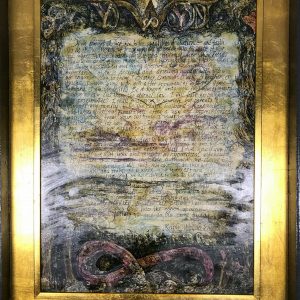Description
A reproduction of the original KPFT Radio 90 by Bob Camblin
Lighted reliquary
29 x 21 in. (image)
37.25 x 29 x 5.5 in. (frame)
This piece is a reinterpretation of Botticelli’s “The Birth of Venus,” and is titled “KPFT Radio90” but instead of the classic nude figure emerging from the shell, this rendition is filled with intricate, dense line work. Various symbols, text, and detailed images and messages are woven into the figure, shell, and background, creating a tapestry of hidden meaning and visual complexity. The beige background provides a stark contrast to the detailed central figure, emphasizing the drawing’s elaborate linework. The text “KPFT 90 Radio” and other markings suggest layers of cultural commentary, possibly related to KPFT radio station in Houston Texas in the 1970’s.
In Zen, the concept of emptiness (śūnyatā) holds significance, referring to the absence of inherent form and the fluidity of existence. The reimagined Venus may symbolize the idea that the self is an aggregation of experiences, ideas, and cultural influences—an ever-changing process rather than a static being. The multitude of symbols within the figure invites contemplation on the notion of “self” as shaped by external elements rather than possessing an intrinsic identity.
Using the I Ching, Hexagram 61, “Inner Truth,” comes to mind. This hexagram is about communication and sincerity, which could align with the artwork’s emphasis on media (radio) and layered messages. The figure filled with detailed illustrations might represent an exploration of the layers of meaning in the human experience, with radio serving as a medium through which different perspectives and truths are shared.
This artwork integrates personal and cultural identities, represented by the intricate illustrations within the figure and shell. The use of text and radio themes suggests communication’s role in shaping perceptions, challenging the viewer to see beyond surface appearances. From a Zen perspective, it emphasizes the illusion of a fixed self, while the I Ching encourages deeper introspection to find authenticity amidst life’s noise.
The work draws on the classical tradition of Botticelli while diverging into a more contemporary, mixed-media approach. The intricate detailing and textual elements evoke techniques from Surrealism and Dadaism, which utilized text and collage to critique societal norms. Additionally, the dense line work and symbolism parallel some elements of the psychedelic art movement, known for its complex and mind-bending visual effects.
